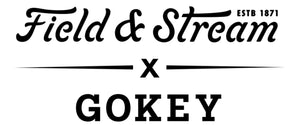Cough Linked to Neurological Disease
Labrador retrievers are the ‘poster-dog’ for paralysis of the larynx which we have learned may be an early indicator of a more complex neurological disease. New understanding of this common senior canine condition has come to light as scientists further investigate its cause. As a pet owner, become aware of recognizable symptoms and options your veterinarian may provide for your pet’s care.
The Larynx
The larynx connects the mouth to the airway and acts as the gatekeeper to the trachea (i.e. the “windpipe”). When working properly the larynx opens and closes to facilitate coordinated flow of air to and from the lungs, aids in removing phlegm and foreign debris from the lower airway, and prevents food stuffs from inadvertently entering the airway. The larynx is also used in communication via sound production.
What Causes Laryngeal Paralysis
Laryngeal paralysis in older pets most often occurs due to degeneration of the nerves that control the muscles of the larynx (alternatively, tumors or trauma in the neck area may cause similar symptoms). The term laryngeal paralysis is now included as a single symptom of a convoluted neuropathic condition. As scientists further explore the root of the problem, findings suggests a more widespread disease process than isolation in the larynx. Geriatric Onset Laryngeal Paralysis and Polyneuropathy (GOLPP) is the newest term for a series of related symptoms. We now understand that in dogs, laryngeal paralysis is often the warning light to a series of other neurologically related symptoms occurring in the body (i.e. a polyneuropathy). Most dogs with laryngeal paralysis also exhibit signs of swallowing difficulty and mobility issues including hind end weakness and muscle loss. Noticeable first symptoms are often abnormal sounds during exercise: a raspy throaty noise technically termed ‘respiratory stridor’. Often a change in bark tone is reported by owners as well. During the later stages of disease, the raspy breathing is present even at rest. Effected pets also routinely exhibit symptoms such as coughing and gagging during eating/drinking, exercise and heat intolerance, and in severe cases, episodes of collapse and asphyxiation (suffocation). These pets are at an elevated risk of pneumonia as well because the gatekeeper to the airway no longer keeps out food stuffs nor allows adequate flow of air. Loss of innervation leaves the larynx in a state of partial collapse- never fully opened or closed.
Other Cough Causes
A coughing dog can indicate any number of airway diseases: Young patients are more likely to experience coughing due to infections, congenital deformities, inhalation of foreign material, and parasites, while more aged pets experience cough due to heart conditions, cancers, endocrine diseases, and neurological dysfunction. While any of these conditions can present at any age, recognizing patterns is key to diagnosis. Not every senior dog with cough has GOLPP and diagnostics are needed to confirm symptoms.
GOLPP Prognosis and Care
Early recognition of GOLPP has sadly not proven to help slow disease progression. Your veterinarian can aid in ruling out other differentials. An exam, routine blood work and radiographs, as well as direct visualization of the larynx is needed to verify diagnosis - a process that requires deep sedation and a special scope. If your dog has life-threatening laryngeal paralysis, emergency care and surgery may be indicated. The primary surgery used to treat laryngeal paralysis is called a “tieback” procedure - where one side of the larynx is surgically altered to allow permanent widening of the larynx. The surgery is not without risk and is recommended only in severe cases. Medication has not proven helpful in prevention of the progression of GOLPP; polyneuropathy appears to worsen over time. Usual progression from mild respiratory signs to severe polyneuropathy ranges from 6 months to 2 years. Treatment is aimed at supportive care including change in feeding position and kibble size, aids for safe mobility, and avoidance of risky behaviors like swimming. Diet may play a critical role in supporting neurological function, and a balanced intake of essential fatty acids may help preserve proper nerve function as long as possible.
More research is still needed in this area; scientists at Michigan State University appear to be leading the way in further understanding of this complex condition.
### Amanda Burow, D.V.M. (Dr. B), is a graduate of Iowa State University’s College of Veterinary Medicine. Dr. Burow’s patient list includes hunting dogs of all varieties, as well as several field trial dogs and full time sporting guide dogs. In addition to practicing general veterinary medicine, she has special interest in the areas of preventive care, emergency medicine, and dermatology. In her spare time, she enjoys being outdoors and on the lake, staying active, reading, and spending time with family and friends. Mud River is proud to share these tips from Dr. B with our customers. Keep in mind it is best to work with your local veterinarian to determine the needs for your animals.










